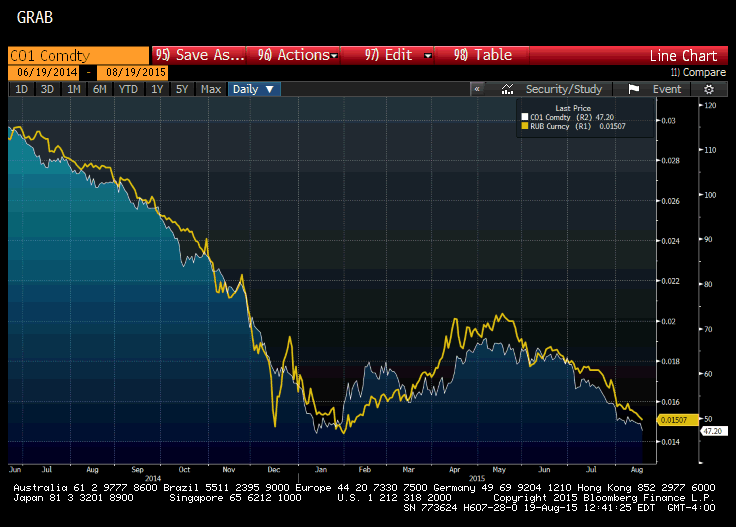Oil prices have fallen to new lows following news of the an unexpected 2.68 mln barrel build of US crude oil inventories. The API data had prepared the market for a small draw down.
Many view the sharp drop in oil prices through the lens of inflation/deflation. For example, this is the traditional view of the ECB. It hiked rates in mid-2008, between Bear and Lehman's demise, ostensibly because the near-$150 barrel of oil was going to be inflationary.
Looking at the lens through the other side, the drop in oil prices is said to be deflationary. Many argue that the Fed should not raise rates because of this deflationary impulse. Unlike most central banks, the Fed targets core inflation, which excludes both food and energy. The July FOMC minutes reiterated how Fed officials view the impact of the drop in oil. Most officials thought the downward pressure on inflation from energy (and the dollar) would abate over time.
The point is that Fed officials see the core rate to be the signal, while cpi is noisy. Over time, for the last half century and more, headline inflation in the US has converged with core inflation -- not the other way around.
Higher oil prices, we have often been told, acts like a tax on consumers and a regressive one at that. The more it takes to heat the home and fill the car with gasoline, the less money a household has to buy other goods. Similarly, the drop in oil prices tends to be passed on to the consumer. That's tantamount to a tax break. American sees about a 3% annual rise in consumption, which is a bit more than average hourly wage increases all without using revolving credit (credit cards). Lower oil prices are generally good for the US, even if not for all regions or sectors.
Separately, NATO issued its strongest statement in several months on Wednesday over the escalation of hostilities in East Ukraine. At the same time, the drop oil prices will hurt an already fragile Russian economy.
This Great Graphic, composed on Bloomberg, shows the price of brent oil (white line) and the ruble against the dollar (yellow line, inversion USD/RUB). It is a fairly tight fit. I am often suspicious of charts that show two time series with different scales. Correlation is a quantitative relationship that one cannot simply eyeball.

On a 60-day basis, and running the correlation on the percent change of brent and the ruble, the correlation is 0.66. Since 2000, it has rarely been greater. The peak was in 2010 near 0.73. I looked at several other currencies that seem sensitive to the change in oil prices.
The Canadian dollar's correlation is 0.54. The peak since 2000 was in 2012 near 0.78. The Mexican peso sold to new record lows Wednesday, but the correlation with brent on a percentage-change basis is just shy of 0.17. The peak was in 2010 near 0.66. The Norwegian krone's correlation is almost 0.21. In 2008 it was almost 0.75.
Russia's economy is likely to weaken further. It contracted by 4.6% in Q2 after a 2.2% contraction in Q1. The government's forecast of a 3.2% contraction this year will either be revised down or the economy will under-shoot the forecast. Data reported earlier Wednesday indicate Q3 is off to a poor start. Real wages are off 9.2% year-over-year in July. The consensus was for a 7.5% decline. Retail sales are off 9.2% in July, the seventh month of contraction. The government only managed to sell 60% of the RUB10 bln (~$150 mln) of bonds earlier Wednesday, prior to the leg down in oil.
Russia has been cutting rates this year. It cut its key rate (one week auction rate) 50 bp at the end of July to 11.0%. It has reduced rates by 600 bp this year. The risk is that it is forced to raise rates despite the intensifying economic slump.
